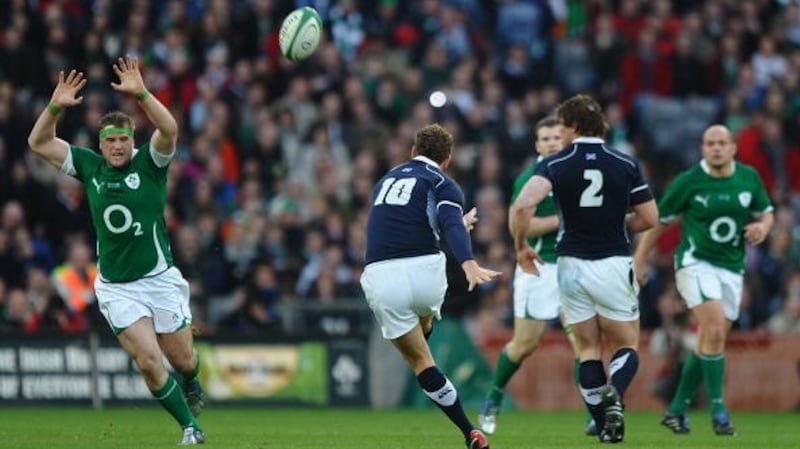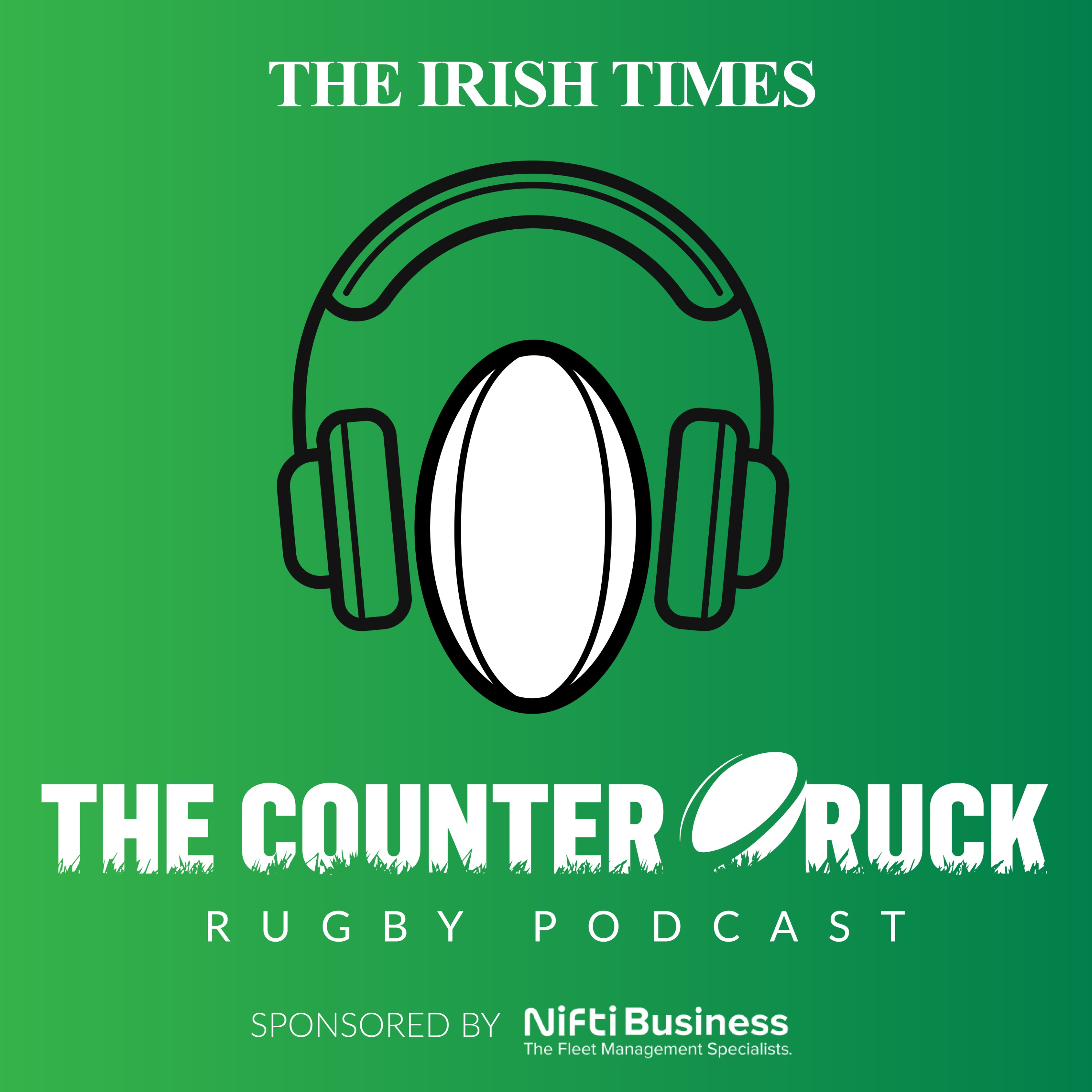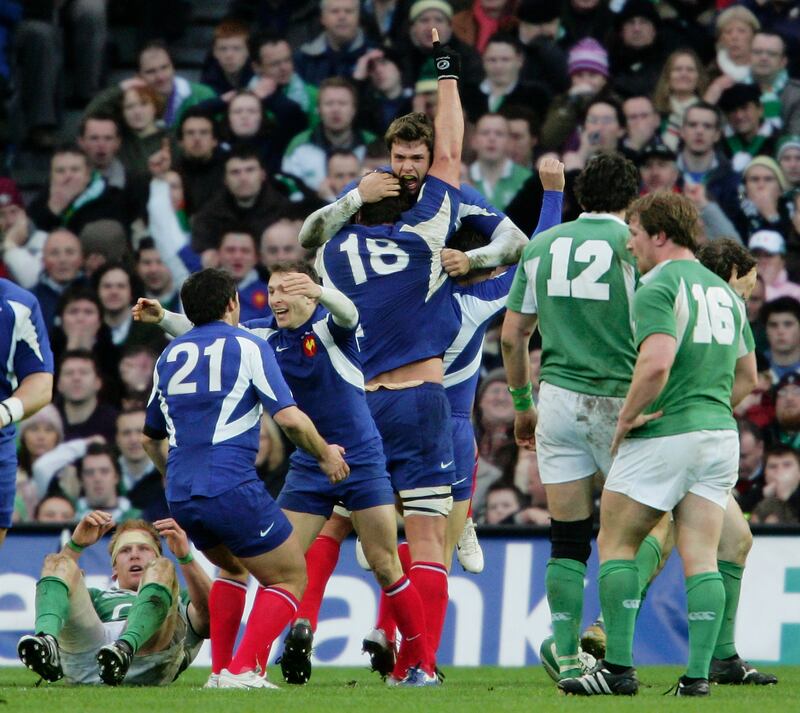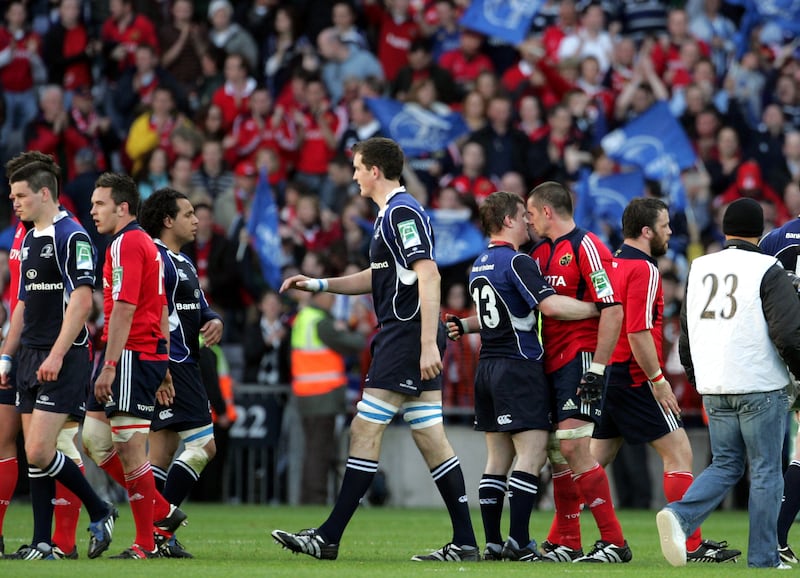Croke Park and rugby – what springs to mind? Tears, cheers but no beers, at least in seats? Martin Corry’s salute? Dan Parks’s penalty. Perhaps the time Vincent Clerc, who went on to be Irish rugby’s long-time nemesis, sucked the joy out of the stadium, as it went from colosseum to mausoleum with a dip of his shoulder and a swerve of the hips?
Or a quiz question to which the answer is Tommy Bowe? Maybe it was being part of, or watching on in, 2009, as a then world record crowd of 82,208 descended on GAA headquarters as Leinster dethroned the reigning Heineken Cup champions, a brilliant Munster team.
On Saturday evening Croke Park will host a second European Champions Cup semi-final. The protagonists are Leinster once again, and a team, Northampton Saints, with whom they share an intimate tournament history through a series of duels including the 2011 final.
It’s an occasion that marks the 16th rugby match at the Jones’ Road venue. The first 15 were between 2007 and 2010, and a couple of them belong in any discussion about great moments in Irish sporting folklore. But what is less well known is the Croke Park effect on visiting players.
RM Block
The stadium’s historical significance was an important enough consideration for visiting teams to provide context for their players. In 2007, the then England head coach Brian Ashton, a former history teacher, invited former Ireland fullback and England academy manager at the time Conor O’Shea to speak the squad.

Ashton had coached Ireland previously. O’Shea recalled: “He [Ashton] thought it was a good idea that I just talk to them about Croke Park and what it means to Irish people. He wanted his team to know that this wasn’t just another Irish pitch in Dublin.
“He wanted me to tell them about where they were going to, the background to the ground they were going to play on, that a Tipperary player called Michael Hogan had been killed there by the British army back in 1920. They were interested. Genuinely they seemed to be incredibly interested in it. I spoke to the whole 22-man squad and all of the backroom staff.”

Northampton head coach Sam Vesty on meeting Leinster at Croke Park
It was a remarkable occasion, from England backrow Corry’s generous and spontaneous applause as he stood in line in acknowledging the respectful silence that the crowd afforded to God Save the Queen, to Ireland’s subsequent 43-13 victory.
That was the second rugby Test match to be played at Croke Park, predated by Ireland’s clash with France on the second weekend of the same tournament, the 2007 Six Nations championship.
Eddie O’Sullivan’s side led 17-13 – Ronan O’Gara scored all of Ireland’s points – with two minutes remaining before French wing Clerc, known to his team-mates as “Chicken” for his running style, crossed for a try that Lionel Beauxis converted.

France won 20-17 and went to claim the championship, inflicting Ireland’s only defeat in the five matches and pipping them on points difference (69 to 65) after each country racked up four victories. From that moment Clerc’s career was in the ascendant, something he reminded Ireland teams about regularly, scoring eight tries against them in total.
The French squad had been briefed about Croke Park and its importance. Clerc recalled: “There was so much else going on around that match. We’d been told a lot about the historical context, it was the first time a non-Gaelic sport had been played in a Gaelic stadium, there was the massacre that had taken place, we knew there was a lot of emotion.
“That emotion was contagious; it was one of the very few times I cried during the opposition anthem. That game in 2007 is one of the most powerful memories for me for many reasons.”
Those involving the build-up to the try remain sharp. “We got the ball back from the restart and it went down the right with some quick ball. You realise that everything is down to instinct. It was disorganised but the desire was there to go and get the win. We could have lost a couple of balls, but people reacted and threw themselves on it.
“When I got the ball, it was pure instinct. I decided to cut in, because the defence was drifting but it wasn’t a case of spotting a prop in front of me. From there, when you’re near the line and you’ve made the decision to go for it, you don’t know if it’s the right decision. But you know that you have to go 200 per cent because you’ve felt something.

“Strangely a few minutes earlier I said to myself that if I scored, I would grab the cockerel to my chest. I didn’t really celebrate tries but that one I knew I would. It came a few minutes later so it must have been destiny.”
Unsurprisingly Clerc, now a rugby commentator with French television station Canal+, enjoyed his time facing Ireland. “It seemed to go well for me against Ireland. We had a similar way of playing, both teams were really attacking and often it would be one half for them and then one for us or vice versa.
“So, we would dominate, and they would come back. Whether it was at the World Cup in 2007 or the Six Nations the following year when I scored a hat-trick, I did have some success against the Irish, and thankfully they didn’t hold it against me too much. It might even have brought us closer.”
Croke Park has not always proved a boon for the home side or favourites. A heavily fancied Munster side were ambushed by Leinster 15 years ago, something that the Saints will have noted. Ireland lost there to France (2007), Wales (2008), New Zealand (2008) and in the last Test match played in GAA headquarters (2010), when Parks’s late penalty gave Scotland a 23-20 win.
Northampton’s Irish-born strength and conditioning coach Eamonn Hyland gave a presentation to the squad on Monday on the ground’s history, one that outhalf Fin Smith described as “moving”, saying it gave him “goosebumps”. The Croke Park effect can inhibit or galvanise but none are oblivious or immune, whether friend or foe. It adds a nuance to Saturday’s contest.
To tie up the Bowe question. He is the last Irish player to score a Test match try at Croke Park.
- Sign up for push alerts and have the best news, analysis and comment delivered directly to your phone
- Find The Irish Times on WhatsApp and stay up to date
- Listen to our Inside Politics podcast for the best political chat and analysis






















